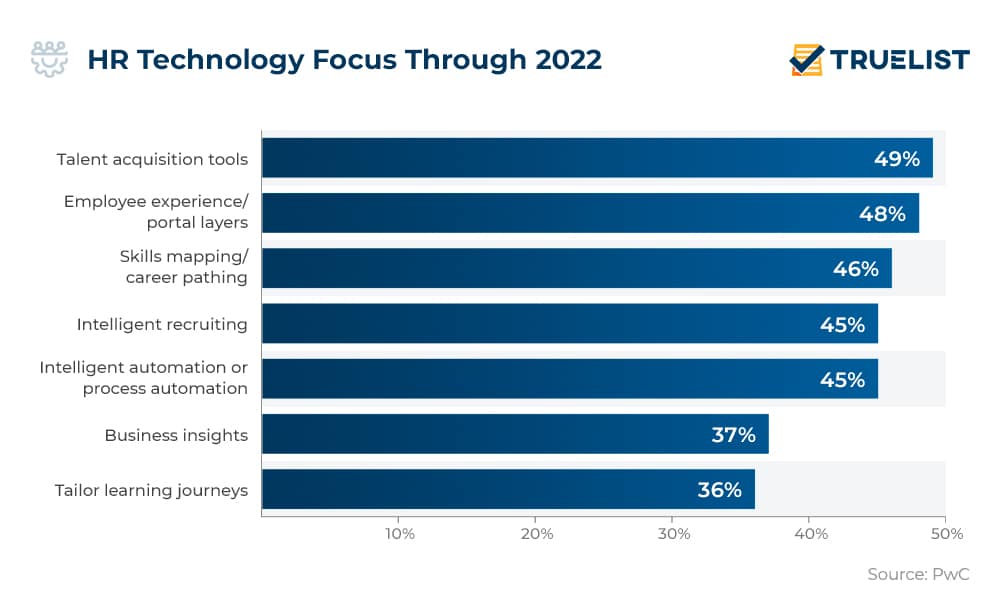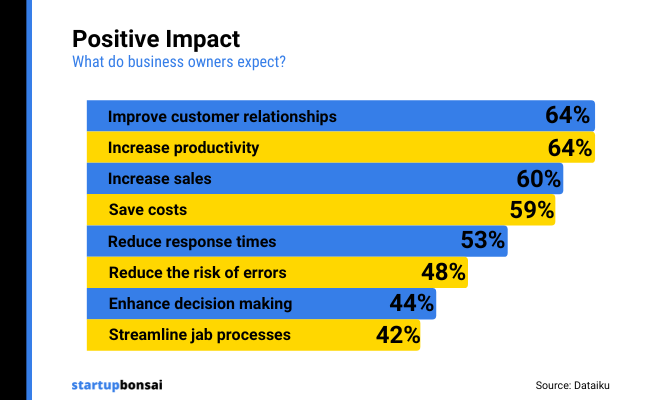Strategic workforce planning: Master the essentials
Strategic workforce planning is your secret weapon for business success. Discover how to align your talent with future goals, master essential techniques, and stay ahead of the curve. Ready to transform your organization's future? Let's dive in.
- Author
 J.P. Walti
J.P. Walti

What is strategic workforce planning?
Strategic workforce planning is a proactive, long-term approach to aligning your human capital with your organization's future objectives. Unlike traditional workforce planning, which often focuses on short-term staffing needs, strategic workforce planning takes a holistic view of talent management.
This innovative business strategy empowers you to:
- Anticipate future skill requirements and potential talent gaps
- Develop a pipeline of qualified candidates for critical roles
- Cultivate a workforce that's adaptable to evolving market conditions
- Balance current operational needs with long-term organizational goals
- Optimize resource allocation and reduce recruitment costs
By implementing strategic workforce planning, you'll hire the right people for today's challenges and build resilient teams capable of driving your organization's success well into the future. It's about creating a workforce ecosystem that's agile, skilled, and perfectly aligned with your company's vision.

Image source: How IBM Incorporates AI into Strategic Workforce Planning
The core principles of strategic workplace planning
There are seven core principles that you should work into your strategic plans.
- Right people: You have the right people for the job. Their skills, values, and goals align with your business objectives.
- Right skills: Everyone from HR to sales staff has the skill sets necessary to perform their roles well and meet or even exceed expectations.
- Right shape: Teams are in the right shape, with manager-to-employee ratios reworked for optimal efficiency—not too many and not too few.
- Right size: You have the correct number of people throughout your company to handle all tasks without burning anyone out or missing deadlines.
- Right time: If your workforce needs to grow, adapt, or even shrink, this is done at the right time to address priorities in the business environment.
- Right place: You have the perfect work location, which today means your office is near your staff or you offer remote work full-time or hybrid.
- Right cost: Find the sweet spot that keeps employees well-compensated and loyal to your business while optimizing your payroll.
Top proven frameworks for strategic workforce planning
Knowing the key components of an effective workforce strategy is the start.
You'll also need a structured approach to help you build a workforce that embodies those principles.
To help, consider using one of these top proven strategic planning frameworks:
The 9-Box Talent Grid

Image source: Unlocking the Benefits of the 9-Box Grid
In this skills inventory, you assess employees based on performance and potential by sorting them into a 9-grid box.
One side is split between high, medium, and low performance, and the other is split between high, medium, and low potential.
Using this matrix, you can decide which team members to train, which to focus retention efforts on, and which to let go.
PESTLE workforce analysis
This framework examines external factors (Political, Economic, Social, Technological, Legal, Environmental) influencing workforce dynamics. By analyzing these elements, you can:
- Anticipate changes affecting employee performance
- Adjust hiring strategies
- Improve succession planning
- Enhance management practices
- Optimize retention efforts
It aligns workforce strategies with real-world conditions impacting your business.
Scenario planning
Scenario planning is a robust strategic workforce planning framework that enables you to prepare for multiple future possibilities, ensuring sustainable business development and adaptability.
Key aspects of scenario planning include:
- Future-focused approach: This method helps you anticipate and prepare for various potential futures rather than relying on a single prediction.
- Risk mitigation and opportunity identification: By exploring multiple scenarios, you can identify potential challenges and emerging opportunities in your workforce landscape.
- A systematic process: Identify key drivers to determine the factors that could significantly impact your workforce and business, then create 3-5 plausible future scenarios. Based on different combinations of these drivers, analyze the implications and develop action plans.
Step-by-step approach to strategic workforce planning
Understanding frameworks for strategic workforce planning is crucial, but true success lies in effective implementation. You need a structured approach to create a robust plan that aligns with your current business objectives and future-proofs your business.
The following steps will guide you through the strategic workforce planning process, helping you attract and retain top talent, optimize your hiring practices, and build a sustainable business model that adapts to changing market demands.
1. Assess your current workforce
Before embarking on any strategic changes, gaining a comprehensive understanding of your current workforce is vital. This foundational step is not about wholesale replacement, but rather about leveraging and enhancing your existing human capital.
Begin with a thorough workforce audit:
- Evaluate each employee's skills, experience, and potential via an employee review
- Identify high performers and those with leadership potential
- Assess team dynamics and overall organizational structure
- Review current job roles and their alignment with business objectives
This analysis will reveal:
- Skill gaps that need addressing
- Untapped talent that could be developed
- Roles that may need redefinition or restructuring
- Areas where your workforce excels or lags behind industry standards
By conducting this in-depth review, you'll create a clear baseline from which to build your strategic workforce plan. This knowledge empowers you to make informed decisions about training, recruitment, and resource allocation, ensuring that your workforce evolution is both targeted and efficient.
Remember, strategic workforce planning is about optimization, not wholesale change. Your current employees are valuable assets with institutional knowledge and established relationships. The goal is to build upon these strengths while addressing weaknesses to create a more robust and future-ready workforce.
🚀 Supercharge your workforce strategy with Marlee's data-driven insights: Invite your team to answer questions on what motivates them. Identify your high, mid, and low performers for each role, and we'll create a custom XFactor analysis. Schedule a demo with our team.
2. Defining your organization's strategic direction
To effectively plan your workforce, you must first have a clear vision of where your organization is headed. This step involves collaborating with leadership to articulate long-term business goals and objectives. What does success look like in 3, 5, or 10 years?
Identify key areas for growth and anticipate potential challenges. Are you expanding into new markets, launching innovative products, or transforming your business model? Each path requires different talent strategies.
Based on your organizational strategy, determine the skills and competencies essential for future success. This might include emerging technical skills, leadership capabilities, or industry expertise.
Finally, analyze industry trends and technological advancements. How is your sector evolving? What innovations might disrupt your business? This foresight ensures your workforce planning aligns with the broader business landscape, positioning your organization to thrive amidst change.
3. Plan your future workforce needs
Anticipating future talent requirements is crucial for long-term success in strategic workforce planning. This step goes beyond filling current vacancies; it's about shaping your workforce to meet tomorrow's challenges.
Begin by closely aligning your talent forecast with your organization's strategic goals. Identify the critical roles and competencies that will drive your future success.
Don't just focus on hard skills; consider the soft skills and adaptability traits that will be valuable in a rapidly changing business landscape. Conduct a thorough analysis of potential skill gaps between your current workforce capabilities and future needs.
📊 Marlee benchmarks your team's unique work motivations against our proven success factor models from 20+ years of research.
This gap analysis will inform your talent development and acquisition strategies. Importantly, factor in external influences that could impact your workforce needs:
- Market trends: How is your industry evolving?
- Legislation: Are there upcoming regulatory changes that will require new expertise?
- Technology: What innovations might disrupt your field?
- Demographics: How will changing workforce demographics affect your talent pool?
By considering these factors, you'll be better equipped to develop a proactive talent strategy that fills immediate gaps and builds a resilient, future-ready workforce. This foresight allows HR to move beyond reactive hiring and into a strategic role, actively shaping your organization's talent landscape to drive long-term success.
4. Conduct a gap analysis
A critical step in strategic workforce planning is performing a comprehensive gap analysis. This process involves meticulously comparing your current workforce capabilities against your future requirements, providing a clear picture of where your organization stands and where it needs to be.
Start by overlaying your current talent inventory with your projected future needs. This comparison will reveal areas where you have skill surpluses or shortages. Are there departments overstaffed with outdated skills? Do you lack the emerging competencies required for future projects?
Next, examine your headcount projections. Consider both quantitative and qualitative aspects. You might have the right number of employees but lack specific expertise crucial for upcoming initiatives.
Don't overlook the impact of anticipated changes in your workforce. Assess the effect of pending retirements, especially in key roles. Factor in known attrition rates and how they might affect different departments or skill sets. This foresight allows you to plan for knowledge transfer and succession well in advance.
Based on this analysis, determine priority areas for talent development or acquisition. Where are the most critical gaps? Which shortages pose the greatest risk to your strategic objectives? These insights will guide your decisions on whether to train existing staff, hire new talent, or explore alternative solutions like outsourcing or partnerships.
Remember, the goal of this gap analysis is not just to identify discrepancies but to provide a roadmap for strategic talent management. It should inform your training programs, recruitment strategies, and resource allocation decisions, ensuring your workforce evolves in tandem with your organizational goals.
5. Developing your action plan
Once gaps are identified, it's time to create targeted strategies to bridge them. This involves crafting a multi-faceted approach:
- Design tailored training programs to upskill your existing workforce.
- Develop strategic recruitment plans to attract critical talent.
- Implement succession planning for key roles to ensure continuity.
- Explore outsourcing or partnerships to fill specialized skill gaps.
For each strategy, set clear, measurable objectives. What specific outcomes do you aim to achieve? By when?
Assign responsibilities to team members or departments for each action plan. Establish realistic timelines for implementation, considering both short-term needs and long-term goals.
Remember, effective action plans are flexible and adaptable, allowing for adjustments as your organization's needs evolve.
6. Implementing your workforce strategies
With action plans in place, it's time to execute. Roll out your strategies across the organization, ensuring alignment at all levels. Clear communication is key—inform all stakeholders about upcoming changes, new expectations, and the rationale behind these initiatives.
Provide robust implementation support. This might include allocating a budget for training programs, investing in new technologies, such as AI coaching, or reassigning staff to critical projects. Ensure that teams have the resources they need to succeed.
Closely monitor early progress. Be prepared to address initial challenges swiftly. Regularly check in with team leaders and employees to gather feedback and identify roadblocks. Remember, successful implementation often requires agility and a willingness to fine-tune strategies as you go.
7. Monitor, evaluate, and adjust
Effective workforce planning is an ongoing process. Establish clear KPIs to measure success, such as skill acquisition rates or time-to-fill for critical roles. Regularly review progress against your objectives, gathering employee and manager feedback.
Analyze the effectiveness of your strategies using both quantitative data and qualitative insights. Are you seeing the anticipated improvements in performance or capability?
Be prepared to make data-driven adjustments. If certain initiatives aren't yielding desired results, pivot quickly. Remember, agility is key in strategic workforce planning.
Essential strategic workforce planning tools
The good news is you don’t need to develop a workforce plan alone. Many tools can streamline the process:
HR analytics software

Image source: HR statistics
HR analytics software delivers data-driven insights into workforce trends and can be used to identify talent gaps and spot future workforce needs.
49% of HR teams use it to make strategic decisions about talent acquisition.
In addition to hiring, around 48% of HR teams use it to improve employee experience, and 46% use it for talent development.
Corporate performance management
Tools like corporate performance management (CPM) play a critical role. CPM provides the tools and methodologies that make it easier to measure, monitor, and, above all, improve performance in the talent pipeline.
Skill assessment tools
Skill assessment tools like Marlee's motivational analysis help managers and executives understand employees' work style motivations so they can fully appreciate their teams’ skills, limitations, and areas for improvement.
How industry leaders use workforce planning

Photo by Pawel Czerwinski on Unsplash
Tech giant, Google has developed and introduced these approaches to agile workforce planning:
- Project Oxygen: Analyze and identify top leadership qualities and provide managers with one-on-one coaching and frequent feedback.
- The PiLab: Conduct experiments to find and implement the best people management strategies.
- Retention Algorithm: Google has created a tool to identify employees most at risk of leaving.
- Project Janus: An algorithm designed to analyze rejected resumes to find any they might have missed.
These are just a few of the methods Google has used to make itself a people-first destination that champions effective teamwork skills.
IBM
IBM trained their whole HR team in Agile practices and design thinking. By focusing on skills like inclusion, co-creation, positive leadership, and continuous learning, IBM has refocused and improved its workforce output.
With analytics, AI, and this new approach, IBM drove down time-to-hire by 50%, increased employee engagement by 20%, and, most notably, increased learning consumption to 25% higher than the industry average.
Amazon
Amazon uses workforce planning to fill its technical skills gap and retrain existing staff in new areas of its ever-evolving business model, a massive $1.2 billion investment.
How to develop your strategic workforce planning skills further
To develop your strategic workforce planning skills further, consider:
- Engaging a career coach.
- Earning certifications.
- Completing online courses.
- Attending workshops.
- Learning from senior leadership within your company or your network.
Future trends in strategic workforce management
The role of AI in workforce planning
Artificial Intelligence (AI) is revolutionizing strategic workforce planning, offering unprecedented insights and efficiencies. According to a recent PwC study, 72% of business leaders believe AI will be fundamental to the future of business.
Key AI applications in workforce planning include:
- Predictive analytics: AI algorithms can forecast future skill needs with remarkable accuracy, allowing organizations to proactively address potential talent gaps.
- Enhanced talent management: AI-powered tools, such as AI HR software, can analyze vast amounts of employee data, from performance metrics to engagement levels, providing a holistic view of workforce capabilities.
- Personalized learning and development: AI can create tailored learning paths for employees, optimizing skill development and career progression.
- Unbiased recruitment: AI-driven platforms can help reduce unconscious bias in hiring processes, promoting diversity and identifying the best talent regardless of background.
- Workforce optimization: AI can analyze team compositions and suggest optimal structures for specific projects or goals.
- Real-time performance tracking: AI tools enable continuous performance monitoring, allowing for timely interventions and support.
- Attrition prediction: By analyzing patterns in employee behavior and market trends, AI can predict potential attrition, enabling proactive retention strategies.
While AI offers powerful capabilities, it's crucial to remember that it should augment, not replace, human decision-making in workforce planning. The most effective strategies will combine AI's analytical power with human insight, creativity, and ethical considerations.
As AI continues to evolve, organizations that effectively integrate these tools into their workforce planning processes will gain a significant competitive advantage, driving innovation, productivity, and employee satisfaction.

Image source: AI statistics
Integrating diversity, equity, and inclusion in workforce planning
Diversity, Equity, and Inclusion (DEI) are not just buzzwords but critical components of a successful strategic workforce plan. Research shows that diverse teams are 35% more likely to outperform their less diverse counterparts.
Key benefits of strong DEI initiatives include:
- Enhanced innovation and creativity
- Improved decision-making and problem-solving
- Increased employee engagement and retention
- Expanded market reach and customer understanding
To effectively integrate DEI into your workforce planning:
- Set clear, measurable DEI goals aligned with your business objectives
- Conduct regular diversity audits to assess current state and progress
- Implement bias-free recruitment and promotion processes
- Develop inclusive leadership training programs
- Create mentorship and sponsorship opportunities for underrepresented groups
Leverage workforce planning tools and analytics to:
- Track DEI metrics and identify areas for improvement
- Analyze the impact of DEI initiatives on business performance
- Forecast diversity needs in future talent requirements
Remember, successful DEI planning goes beyond hiring. It requires creating an inclusive culture where diverse perspectives are valued and all employees can thrive. This approach not only enhances your workforce capabilities but also drives innovation and competitive advantage in an increasingly global marketplace.
Embracing the future with strategic workforce planning
Strategic workforce planning is not just about building a dream team—it's about crafting the future of your organization. As a forward-thinking leader, you now have the tools and insights to transform your workforce into a dynamic, adaptable asset that drives business success. By aligning your talent strategy with long-term organizational goals, leveraging data-driven decisions, and embracing emerging technologies, you're positioning your company to thrive into the future. The future of work is here—are you ready to lead the way?


